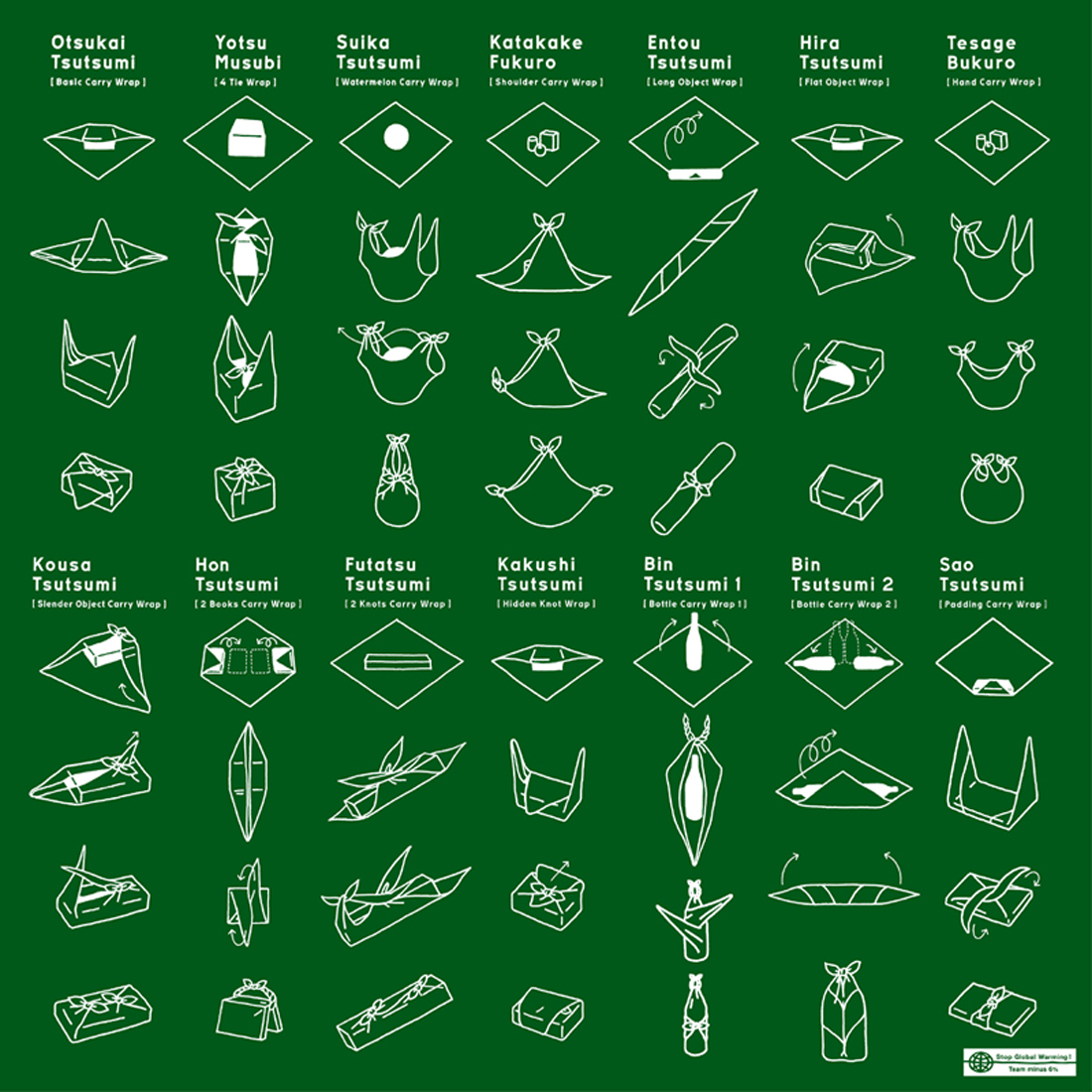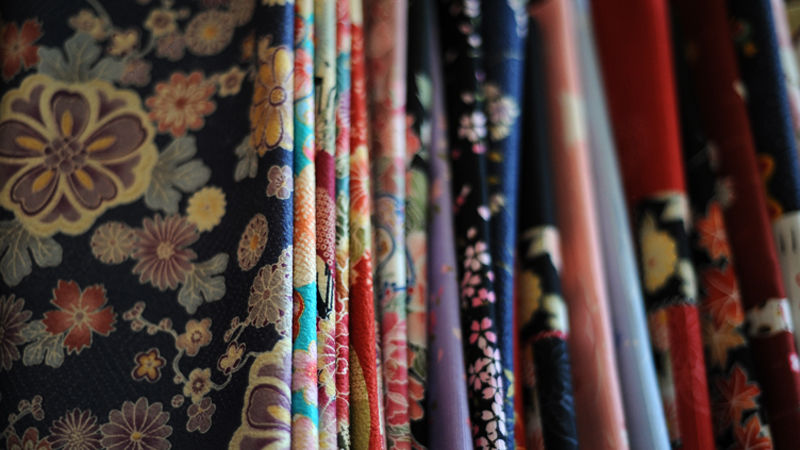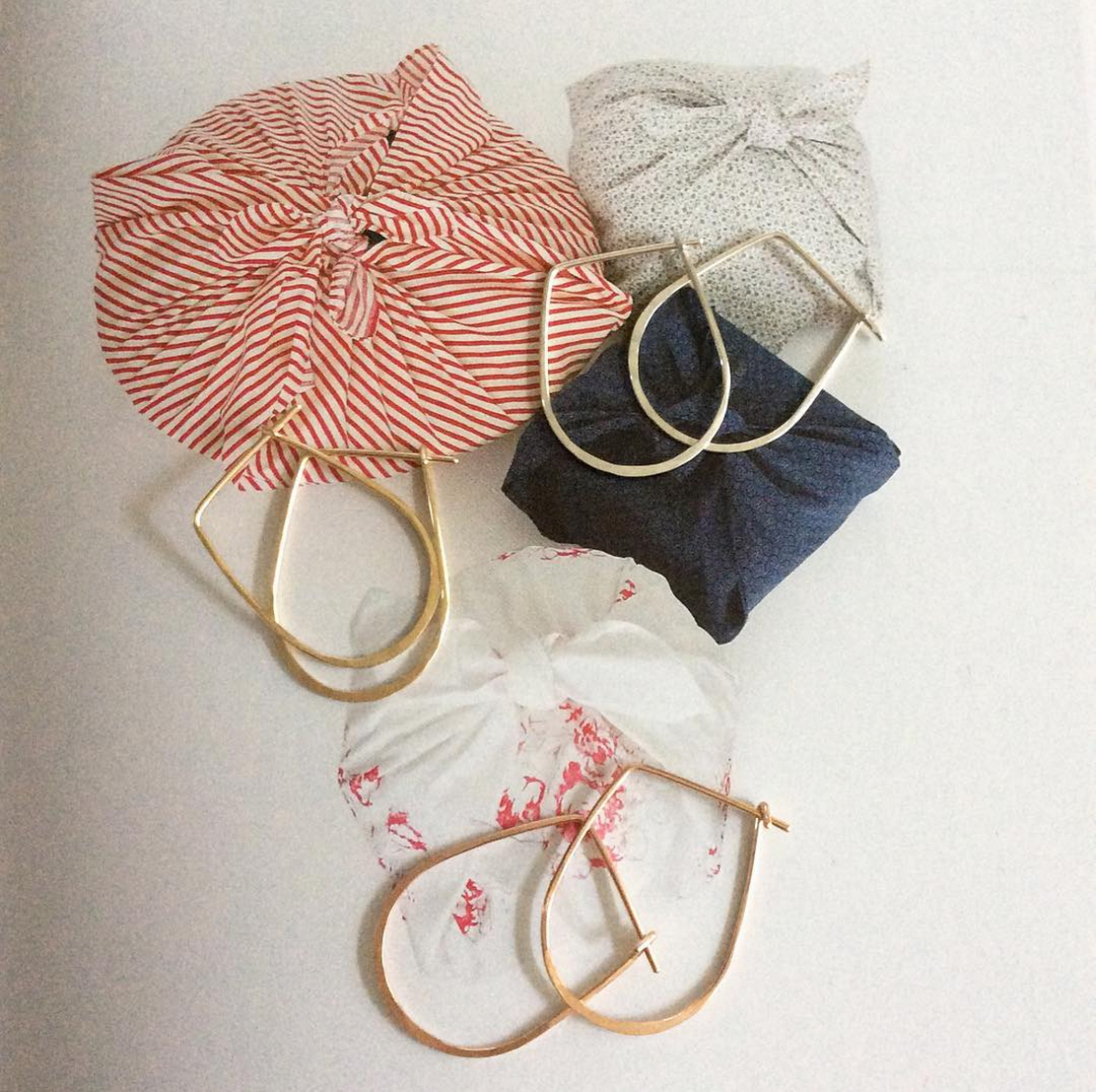In Japan, before mass-produced plastic bags took over, a square of cloth served to wrap purchases of varying shapes and sizes. What the Western world may have derided as a “hobo bundle,” was elevated to a visual art, using traditional Japanese cloths called furoshiki.
Pronounced fu-ro-shkee, this cloth and its historical uses can be traced through the word’s etymology: “furo” means bath and “shiki” means mat. In communal Japanese bath houses, many people brought a cloth with them to wrap up their items while bathing and to use as a mat while getting dressed again.
Throughout the years, folding and tying furoshiki has become an art form in itself that demonstrates the utility and elegance of Japanese design. A traditional furoshiki represents thousands of different ways to wrap almost any object, with different colors and designs conveying unique meanings.
A red furoshiki is considered ideal for happy events, while cooler colors like blue are traditionally used for sad occasions. Muted earth tones are chic.

In Japan’s post-World War II economic boom, furoshiki came to be seen as troublesome and old fashioned. Plastic bags were invented in 1965, eclipsing paper bags in the 1990s. And due to its wrapping culture, Japan has been singled out over the years as disproportionately contributing to plastic bag waste by individually wrapping items.



